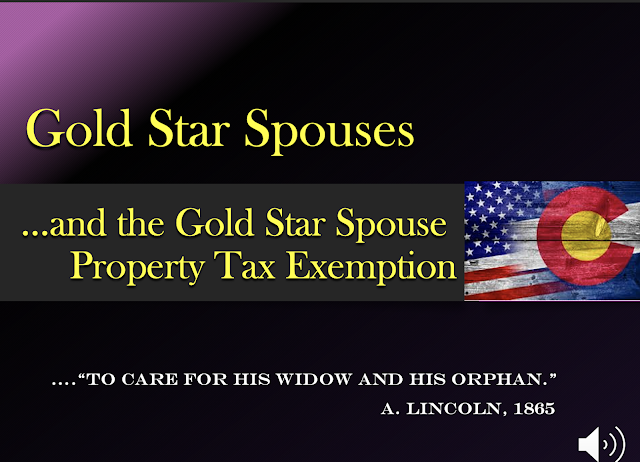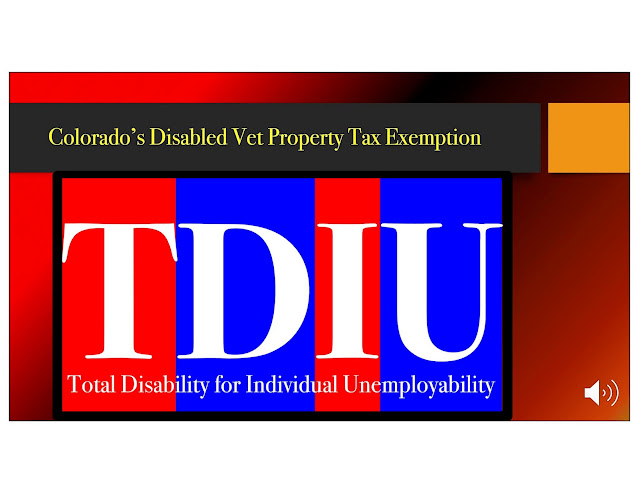It is amazing and totally confusing, the countless government agencies littering the landscape that veterans and other citizens must navigate. Agencies that impact thousands of lives while we have no idea about their powers or even their existence. In pursuing C-123 veterans' Agent Orange claims, I encountered ATSDR, NIESH, NTC, JSRRC, AFPMB, M21-1MR, ACDC, USAFSAM, USCAVC, USAFPMB, and AFBCMR. Alphabet confusion!
One agency with its unrevealing initials is the JSRRC, the “Joint Services Records Research Center.” JSRRC turned out to be pretty darn important to all veterans with Agent Orange exposure or PTSD claims. JSRRC is part of the Department of Defense but run by the US Army, and operates out of Fort Belvoir, Virginia.
JSRRC and our C-123 veterans' Agent Orange issues came together in late 2011. By early 2012 my VA disability claim was initially approved by the Portland VA claims office citing CDC confirmation, but then denied on review by Washington authorities.
As I read the denial of my C-123 Agent Orange exposure claim submitted over a year earlier, I saw it was authored by Tom Murphy, then VA director of compensation and pension in the Veterans Benefits Administration (VBA.) Our association used my own Agent Orange claim as a representative claim because I was already 100% VA disabled for spinal cord injuries; I could argue without any appearance of personal gain.
Today Tom is acting Under Secretary for Veterans Benefits. Murphy dismissed every issue I raised in my claim. What has interested everyone concerned about Agent Orange ever since was his oft-quoted line, “There is no conclusive evidence that TCDD exposure causes any adverse human health effects.” WOW!
Agent Orange is harmless? Note the use of “conclusive,” cleverly chosen because few diseases such as prostate cancer or ALS can be pinned to Agent Orange with any such "conclusive" certainty. Instead, as Murphy and respected VA researchers like Dr. Mark Garzatto at VA Portland know perfectly well, the situation is our odds of getting these diseases are much worse having been exposed than if not.
Sometimes, even twice-worse, as Dr. Garzotto's research proved. But never absolutely “conclusive” proof as with a broken arm.
This point is well-known in science and throughout the VA, but here Murphy hid behind the confusion he would cause. In a similar manner, we know asbestos is harmful, as is certain radiation and many different toxins; exposure to such things isn't "conclusive" but the probability of resultant disease is greatly worse than not.
What an amazing statement! Murphy actually wrote in denying my Agent Orange prostate cancer claim his official top-level response that TCDD, the known carcinogen in Agent Orange is harmless. This would come as startling news to VA physicians and scientists, VA, WHO, and every other government agency having already concluded decades ago that Agent Orange and its TCDD contaminant is the most poisonous man-made toxin on earth.
Murphy and his staff dismissed evidence supporting my claim from the Air Force, Columbia University, the Committee of Concerned Scientists and Physicians, Oregon Health Sciences University, the Agency for Toxic substances and Disease Registry, the National Institute for Environmental Health Sciences, and other sources. Nothing persuaded Murphy or his subject matter experts that I’d had Agent Orange exposure. Nothing.
Nothing until all these truly persuasive sources ganged up on the VA in 2014 at Institute of Medicine hearings, the IOM concluding VA had been wrong all along. Later Murphy was to earn the moniker “Agent Orange denier” from veterans’ organizations like DAV and VVA.
I met with Murphy in his DC office on February 28, 2012. Murphy explained that he would only accept exposure proofs from the Joint Services Records Research Center, not what veterans ourselves might submit. His response explained why materials we send were disregarded at VA.
The regional office working claims like mine was required by VA regulation to contact the Joint Services Records Research Center ("JSRRC".) Initially, JSRRC had reported it" could not verify that the Veteran was exposed to Agent Orange” but subsequent reports were more affirming. The most startling thing Murphy told me was that no amount of evidence would ever permit a C-123 claim to be approved – VA had already determined there could have been no exposure aboard our airplanes. As he ushered me out, for any further inquiry he recommended Dr. Terry Walters in Veterans Health Administration.
Nothing at all was resolved by meeting with Murphy. However, reading more and more about his VA rules for claims and appeals, it was clear JSRRC needed to be provided our evidence but also convinced of its relevance. I read through procedural VA manuals and regulations once again.
Whether or not Murphy gave much JSRRC credence, VA rules were there in print and, along with Murphy and Walters, they’d been the death-knell to so many veterans’ claims from men and women. The governing VA regulation is “M21-1, Part IV, Subpart ii, Chapter 1, Section H - Developing Claims for Service Connection (SC) Based on Herbicide Exposure.” This VA claims manual states:
“Regional offices (ROs) must submit a request for verification of herbicide exposure to JSRRC using the Defense Personnel Records Information Retrieval System (DPRIS) web application when
• a Veteran provides, or military records contain, the information JSRRC requires, but
• service records do not confirm the Veteran served in an area associated with herbicide exposure.”
This meant for all claims like ours VA has a legal duty to assist with claims. Turning to JSRRC for input advice or assistance is required for claims of Agent Orange exposures other than in Vietnam. Once the 1991 Agent Orange Act went into effect, regional VA claims staff outinely submitted all such inquiries to JSRRC in Fort Belvoir, Virginia. For the path forward, we figured convincing JSRRC would then force Murphy to accept our claims.
Murphy had made it clear that although a JSRRC review was required for our claims it still could be denied any real persuasive power: It seemed that VA ignored or disputed virtually everything veterans submitted. except some of what was sent by JSRRC. Even that could be disregarded. Still, getting our stacks of evidence to JSRRC for VA inquiries remained important as the next step.
When I called to ask, JSRRC director Mr. Dominic Baldini offered an appointment on my next trip to Washington DC. I made the expedition to Fort Belvoir where Baldini met me very warmly and immediately assured me his team always sought the information necessary hoping to support veterans’ claims. JSRRC archivists, a small team of just twelve experts in researching government files, was obviously dedicated and very overworked.
A note here. I’d prepared an in-depth report, a large binder and CD with all the FOIA results, agency opinions and other proofs in hopes that JSRRC would weigh them carefully and return a more positive response to VA inquiries about C-123 veterans’ claims. Included were materials from ten universities whose scientists and physicians reported on our exposures.
Also, I had source data from the Air Force, aircraft toxicology results, and data from other federal agencies to persuade JSRRC and give it information to persuade VA. Baldini and I half a day pouring through the major stuff point-by-point, and he seemed to assure me that JSRRC would have that source data to help affirm C-123 veterans’ exposure claims.
I was surprised, then, as every claim kept being denied. VA insisted JSRRC found no evidence supporting approving our Agent Orange claims. I wrote the manager of VA’s Agent Orange claims desk, Mr. Jim Sampsel, and copied him on the same binder of persuasive materials I’d provided to JSRRC.
The next stall was Sampsel's when he emailed that VA would only accept input from JSRRC, and that information, to be acceptable, could only be from military and related DoD sources. All the input from Columbia University, independent scientists, state agencies and even NIH and CDC was somehow, regardless of merit, unacceptable to Sampsel and his Agent Orange desk.
Sampsel’s ploy was obviously to prevent any input that would force a conclusion supporting our claims. In fact, JSRRC is responsible for reporting to VA on all credible information; Sampsel was deliberately putting on his blinders even with his blinders, was keeping his eyes and ears shut.
I accepted the challenge; I had no choice anyway. If Sampsel insisted he’ll only accept JSRRC input and it had to be only from military sources, I’d find it. Dr. Linda Birnbaum was the famous director of the National Institute for Industrial Health Sciences; she backed the ATSDR letters. If Sampsel would accept only DoD input, she'd get it for him. Dr. Birnbaum had many officers from the US Public Health Service working for her, so she had the most senior, Captain Aubrey Miller MD USPHS, write a report for Sampsel. USPHS officers are actually military officers and must be acceptable to Sampsel. Sampsel just ignored it anyway.

I double-checked and made certain Baldini still had everything I’d left for JSRRC, evidence that should have proved our case to Sampsel and his VA overlords. Baldini had been sympathetic during my visit, and I knew he had ample evidence to force Sampsel to use VA’s own narrow focus just as VA kept refining it, twisting and turning to avoid constructed accepting any such proof and keep our claims denied.

Only later I figured out that Baldini had already sent Sampsel a thoroughly documented summary of that information. It seemed all of Sampsel's obstructions against our proofs were dreamed up on the fly but even when we were able to comply he ignored everything anyway. But Baldini's carefully-worded C-123 summary was persuasive, cited the 200-times greater cancer risk, and was copied to many others. I thought Sampsel couldn’t turn away from the strength of our evidence any longer. I was wrong again.
Sampsel, this pretzel-brained anti-veteran government one-man claim denial obstacle course, was amazing.…he developed yet another way to turn his head away from evidence. In the face of the JSRRC input, Sampsel insisted he’d accept only DoD records and once I got that he morphed requirements, his new demand being he'd accept only the JSRRC reports that he first requested, not those sent by JSRRC without a Sampsel inquiry. That way, Sampsel continued denying all C-123 claims by saying there was no supporting evidence.
Sampsel's VA Agent Orange desk completely stopped making any inquiries to JSRRC about us. No inquiry from Sampsel at VA meant no Baldini-JSRRC response to support our exposure claims. He engineered the absence of otherwise readily available evidence of our exposures.
 It worked. At least it worked for about another year. Sampsel continued to deny every C-123 veteran's exposure claim while VA was insisting to senators and the media, and even his own senior executives that VA had no such “blanket refusal policy” for our claims and that each veteran’s claim was being carefully evaluated on its own merits.
It worked. At least it worked for about another year. Sampsel continued to deny every C-123 veteran's exposure claim while VA was insisting to senators and the media, and even his own senior executives that VA had no such “blanket refusal policy” for our claims and that each veteran’s claim was being carefully evaluated on its own merits.
Before June 19, 2015, no C-123 claim had ever been accepted by Sampsel at VA, although a few had been approved by the Board of Appeals for Veterans Claims. Those appeals took years, with VA medical care refused until final resolution.
Yet Sampsel and his overlords kept repeating, kept deceiving, kept misleading – “VA will continue to adjudicate these claims on a case-by-case basis.” He did not mention that his own Agent Orange Desk in Veterans Benefit Administration had officially informed field claims offices that no basis existed for approval of a C-123 claim. One such claim from Paul Bailey in New Hampshire was denied by Sampsel's VBA and appealed, then finally granted by the White River VA claims office.
That first unique success was featured in articles by Steve Vogel with the Washington Post, leaving Sampsel to write then-Secretary Shinseki that no basis existed for the claim but it should remain unchallenged any further to avoid political trouble.
Meanwhile, Sampsel kept refusing to accept or to request any information from Baldini’s JCSSC. But Baldini is a man of unusual integrity in such an office. Sampsel had repeatedly emailed JSRRC to push-back against C-123 proofs. Finally, pressured by the March 6, 2013 letter to him from Dr. Christier Portier, director of the CDC Agency for Toxic Substances and Disease Registry, Baldini did the right thing on March 12, 2013, despite his personal friendship with Jim Sampsel.
CDC and other NIH offices had generated several C-123 reports to JSRRC, the VA and copies to the veterans to establish dangerous TCDD exposures. C-123 aircraft had exposed veterans to 200-times military toxin thresholds and exposed veterans to a 200-fold greater risk of cancer. Those were a paperwork trail about frightening health hazards nobody would ever be able to cover up.
Baldini wasn’t inclined to cover this up anyway, certainly not to help Sampsel continue denying claims. Baldini sent his email to Sampsel (requested or not) and also forwarded it to several different government offices and legislators who'd asked about such evidence.
Baldini had finally and officially informed the Veterans Benefit Administration that, as per VAM 21-1 MR, JSRRC had adequate “information of record” to report “relevant documentation” existed in the form of a very authoritative report by the CDC itself to the USAF, a report authored two years earlier by the CDC’s Agency for Toxic Substances and Disease Registry (part of the CDC)
Sampsel had this first ATSDR report (the Sinks report) on his desk, sent to him by the CDC for over a year but disputed it while continuing to insist no such evidence existed supporting C-123 exposure claims. He insisted VA was reviewing claims “on a case-by-case” basis and did not mention that he had directed VA offices around the country to deny all those claims.
At this point Sampsel took the last step available to him to forestall any claims: he acknowledged the existence of the CDC report but kept it from having any immediate effect. He put out a position statement acknowledging the JSRRC message to him, and falsely stated that JSRRC was supposed to only report DOD information. That held off the veterans another full year.
Sampsel was mistaken about limiting JSRRC input. JSRRC is charged to report to VA any and all credible support of a veteran’s Agent Orange exposure claim, particularly from federal government sources.) The faithful Dominic Baldini kept sending Sampsel, unsolicited and therefore ignored, affirmations of C-123 veterans’ exposures. The most comprehensive of these was dated May 15, 2014. Baldini figured Sampsel couldn't ignore a point-by-point from JSRRC. Sampsel didn't ignore...he couldn't as the report was being widely circulated.
.
Later, we learned that JSRRC had been submitting proof to Sampsel at VA several times during a period of nearly three years. None of which ever moved Sampsel act properly per his duties as per VA’s own VAM21-1MR rule book.
Sampsel reacted by pushing his stall as far as possible, saying VA would wait for the results of a study by the Institute of Medicine (released nearly two years later) and would continue in the interim to “evaluate” (i.e., deny 100% ) claims on a case-by-case basis. And deny he did until VA’s new regulation recognizing C-123 exposure claims was published on June 19, 2015.
N-o-t-h-i-n-g ever prompted Sampsel to action. was more than four years after the CDC report (dated January 25, 2012) established C-123 veterans’ exposures. Those were four years in which Sampsel’s antics helped VA withhold medical care and other benefits due disabled veterans from every C-123 vet claiming Agent Orange exposure.
There's an interesting point about Mr. James Sampsel, VA subject matter expert and manager of the Agent Orange Desk, responsible for complex questions arising from veterans' Agent Orange exposure claims. He was invited to brief the VA Advisory Committee on Disability Compensation. For some reason known only to him, he misleadingly informed the committee that much of the renewed attention Agent Orange was getting was merely due to media “hype” and “hysteria.”
“The facts don’t always matter,” Sampsel told the committee.
The June 13, 2017 front page of Stars and Stripes, along with ProPublica and other publications, featured those amazing remarks from Mr. James Sampsel.
Sampsel felt it necessary to orient the committee by first mentioning me:
“For the past several years there's been an advocate, Wes Carter.
He's a retired reservist Air Force Colonel. He was a pilot, a C-123 pilot. After the C-123 Ranch Hand planes were retired from Vietnam, they came back to the U.S. and they sat in mothballs for a while. And then they were distributed to reserve units in Pennsylvania, Massachusetts and Ohio. And they were flown for several years. And Wes Carter was an advocate for this group, the C-123 group, and he claimed that they were exposed to Agent Orange by virtue of dried, solidified Agent Orange that was still active in those planes.
Not only that, reservists do not qualify under the law. He called it bio-availability --there was no bio-availability, because it can't get through the skin. There wasn't anything to inhale, and so on. Anyway, that was the argument that was presented to the Institute of Medicine. VHA commissioned the Institute of Medicine to look into it.
I went to the hearings. One scientist from Harvard or somewhere said that dried, solidified TCDD never stops emanating molecules into the air. Hardly anybody bought that at the time, but the IOM went with it. I don't think the science supports it. Most scientists don't think the science supports it, but the law is what it is.
Sampsel was obviously far, far off base in claiming that the science doesn't support "it," the toxicity of Agent Orange. Sixteen others in that Institute of Medicine committee of physicians and scientists, "one scientist from Harvard or somewhere," along with the distinguished members of the National Academy of Sciences, plus the independent committees the IOM submitted their conclusions to for peer review, plus the Secretary of Veterans Affairs, plus the CDC, all concluded that the science did support C-123 exposure. Sampsel skipped that part, it seems.
While discussing me with the VA Advisory Committee on Disability Compensation Sampsel didn't mention that I was the principal presenter for veterans’ interests at the IOM committee hearings, and also represented the Vietnam Veterans of America that day. Then Sampsel spoke of how he and VA…and Dr. Alvin Young… handle (obstruct) Agent Orange claim. No mention was made of how his Agent Orange Desk avoided accepting JSRRC input to avoid honoring valid C-123 veterans’ claims:
I monitor that mailbox. It's called the Agent Orange mailbox. Everyone that makes a claim, the policy is that the regional office has to send it in and I take a look at the claim. And then I take a look at the Department of Defense documents that we have on Agent Orange use, testing, storage and so on and so on. And I will send back to them and say there's no evidence for this, or maybe there is evidence. And what I use to determine that is Department of Defense documents. And who produced those Department of Defense documents was Dr. Alvin Young.
We had a contract with Dr. Alvin Young, who did, as I mentioned before, he did a lot of research in the '60s and '70s. He worked at Eglin Air Force Base, where they developed the spray nozzles. They sprayed Agent Orange over a two-square mile area for years and used the technology in Vietnam. So he did all the work for the Department of Defense.
That’s right. Sampsel credited Al Young as the expert VA turns to for careful consideration of disabled C-123 veterans’ claims. Young, the Air Force officer who weaponized Agent Orange. Young, who preceded Sampsel at the VA Agent Orange desk where for years he rejected the first waves of Vietnam veterans’ claims by saying "the evidence just isn’t there.” Young wrote Sampsel encouraging him to "hold the line" against C-123 veterans' claims.
Young, the VA contractor and former VA employee who castigated C-123 veterans as “trash-haulers, freeloaders for whom I have no respect" was "helping" VA evaluate our claims. Sampsel's boss Brad Fluhr visited that committee at their next public meeting to apologize for Sampsel's comments. I was there to hear it. Sweet.
A few more factoids about Mr. Sampsel. His personal friend Dr. Al Young was given a no-bid sole-source $600,000 contract to write Agent Orange-focused monographs, most of which opposed C-123 veterans’ claims of exposure. Throughout this contract, as he had with other such contracts, Young reported to VA through Sampsel, and submitted draft copies of his monographs to VA officials to make certain they reflected VA doctrine.
Young later was quoted by ProPublica agreeing he'd “made millions” from his VA work opposing Agent Orange claims over the decades. Young also was noted in ProPublica and other publications for labeling Agent Orange-exposed veterans “trash-haulers, freeloaders for whom I have no respect.”
In 2014 Al Young represented the VA perspective on C-123 Agent Orange at the Institute of Medicine public hearings on the issue. Although he insisted he wasn’t there to represent the VA, he was at the time being paid over $25,000 per month for his Agent Orange monographs.
In one interesting paper, he described the 1971 toxin decontamination of C-123 aircraft No. 664, with photos of the pristine condition of the cockpit, cargo deck and exterior. His point was that #664 and all other C-123 spray airplanes had been safely decontaminated – no post-Vietnam exposures were possible.
 |
Photos from Young's monograph #12. My "oops" balloon points to electronics not yet invented
in 1971, 50 years ago when Young said this "USAF" photo was taken. |
That wasn’t quite the case, however: Young was playing something of a shell game to deceive the IOM. Actually, C-123 No. 664 is today owned by the Air Heritage Museum in Pennsylvania, and the “reconditioning” of that plane was done by the museum itself in recent years, not by the Air Force back in 1971.
Further, the photos Young showed the IOM and printed as part of his $600,000 no-bid sole-source contract purporting to be taken in 1971 of the “reconditioned” C-123 were copied directly from the Air Heritable Museum web site. The photos of “Ponderous Polly,” as the aircraft is named, are still there on line, just as Young copied them. They aren't USAF photos after all.
Young’s input to the Institute of Medicine committee was the VA’s primary push-back against the veterans’ claims of exposure. The IOM report was released on January 9, 2015. Young’s with input was dismissed, tainted as “mere speculation, conjecture.” It is clear Sampsel's $600,000 of VA-money was wasted.
Revenge is sweet, however, especially when unsought and when the other guy brings it on himself. The Institute of Medicine rejected Dr. Young's arguments against C-123 veterans' Agent Orange exposure to them as "mere inadequate conjecture" when it published their decisive report on January 9, 2015.
In 2017 Young told ProPublica that he might have been wrong.
He was.
 |
Alvin Young, PhD
"Dr. Orange" |


























